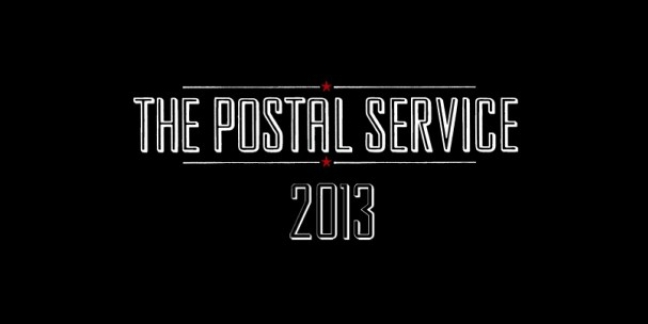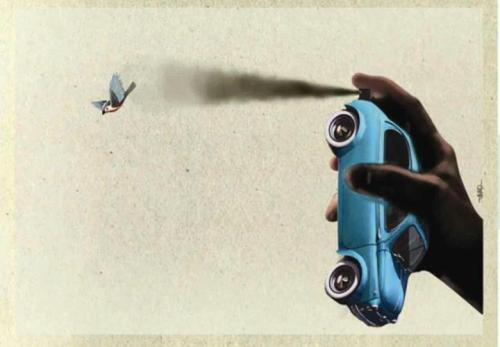Want to troll your federal government? It just got a lot more difficult.
![[optional image description]](http://cdn.theatlantic.com/static/mt/assets/science/comp_jan-2013_3.jpeg)
Whitehouse.gov
First of all, it should be said: Hahahahahahahaha. The White House -- the seat of federal power in the United States, the infrastructure behind the leader of the free world, the place so powerful and notable that even Aaron Sorkin wrote about it -- has been vanquished by a Death Star.
Well, pretty much. In September 2011, the White House launched "We the People," an online initiative designed to bring a digital spin to citizens' right to petition the government. The site allowed citizens to start and spread petitions, promising that any entreaties that received more than 5,000 signatures would receive consideration -- in the form of an "official response" -- from the White House. And the site enjoyed steady growth -- so much so that, in October 2011, the White House upped the number of signatures required to receive an official response from 5,000 to 25,000. In late 2012, however, the site -- driven in part by petitions to allow a selection of states to secede from the Union and to, yep, construct an $850,000,000,000,000,000, Star Wars-style Death Star -- saw a surge. Not only in terms of the number of users it registered (2.4 million) and signatures it collected (4.9 million), but also in terms of the number of requests it generated. The last two months of 2012, apparently, saw some 73,000 new petitions.
So, late yesterday, the White House admitted simultaneous victory and defeat for its "We the People" initiative, announcing that the new signature threshold will be, going forward, a whopping 100,000. The window for signature-gathering won't change: To garner a White House response, a petition needs to get that six-digit support within just 30 days.
You could read the changing of the threshold as the White House frames it: "a good problem to have," the result of the fact that the petition site's popularity "exceeded our wildest expectations," an action designed by busy people doing important things "to ensure we're able to continue to give the most popular ideas the time they deserve." Or you could read the change more like New York magazine does: as the White House acknowledging that its petition site "has become ridiculous."
But you also don't have to choose, because both things are true. "We the People," on the one hand -- by way of the petitions that have populated it -- is totally, ridiculously absurd. There was the Death Star request. And the secession movement. And the petition to deport British-born CNN host Piers Morgan. And the entreaty to designate and protect the Sasquatch as an indigenous species. And the appeal to nationalize the Twinkie. The "We the People" site has received, the White House says, 141,310 petitions over the course of its young existence. And many of those have been, effectively, hoaxes -- elaborate yet low-investment jokes played by citizens rising up, coming together, and exercising their constitutional right to troll.
But the petitions weren't all like that: Though, unsurprisingly, it was the Death Stars and Bigfoots that ended up with the bulk of attention to the site and its service, "We the People" has also fielded an urgently legitimate petition to legally recognize the Westboro Baptist Church as a hate group -- a request that, since its mid-December creation, has received more than 321,000 signatures. The Administration responded, in detail, to a petition to "VETO the SOPA bill and any other future bills that threaten to diminish the free flow of information." It has made moves to improve the regulation and oversight of commercial breeders in response to a petition to crack down on puppy mills. And late last week, in a petition reply that compensated for its lack of real-world policy implications with a broader policy of Nerdy Delightfulness, the White House issued a comically detailed, Star Wars reference-laden response to the Death Star petition. (Official title: "This Isn't the Petition Response You're Looking For.")
The Administration has also gotten flak, though -- for selective answering and long response times (the Westboro petition, having long passed its "merits a response" threshold, has yet to receive a White House reply), for boilerplate answers (the petition to reduce gun violence), for evasive replies (the petition to legalize marijuana). As Harvard's JH Snider argued in 2011, "We the People" will likely have "a short shelf life" for the same reason so many political initiatives have short shelf lives: because the interests of the public and elected officials are misaligned. "The public," Snider noted, "is inclined to ask politicians to take controversial stands that politicians have no rational self-interest in taking."
This could well prove accurate. But it's worth remembering, for all the spottiness, that these digital petitions are a relatively new platform -- the familiar petition, under the power of network effects -- and, like any new technology, they'll inevitably have their growing pains before they mature into a (relatively) finalized form. Much of that maturing, in this case, will have less to do with the technology itself and more to do with its users -- with people, essentially, figuring out how to make productive use of it. And with those people becoming more and more acclimated to a digitally networked world. Though the Administration certainly has some interest in being evasive or coy or otherwise engaging in transparency theater -- and though it will certainly, at times, act on that interest -- "We the People" offers at least the potential for nuanced dialogue. In politics as in most things, good faith begets good faith. We get -- even, and especially, in the digital world -- the government we deserve.
The White House's digital petitions, for better or for worse, represent something rare in a republican democracy: direct interaction with the federal government. Even -- and, again, especially -- in a networked communications environment, that kind of explicit engagement is implicitly valuable. We have had, for the most part, two primary ways of making our opinions known, en masse, to the government that makes decisions on our behalf: voting and polling. Both are blunt instruments, and both are, for various obvious reasons, unsatisfactory as mechanisms of interaction with the government. We have had analog petitions, of course, but much of the actual, day-to-day, one-to-many communications between citizens and their government ends up mediated by, yes, the media. Which is unsatisfactory for a host of similarly obvious reasons.
But the online petition -- the petition that swells up, for the most part, from the greenest of the grassroots -- is a new and relatively efficient mechanism for interaction. Like voting, it offers citizens an explicit and active way to communicate their political desires. Unlike voting, it focuses on issues rather than representatives, and is unconstrained by mandated schedules. Like polling, it assesses public opinion. Unlike polling, it puts the onus on citizens to determine which issues and ideas are worthy of that assessment. The historian and media theorist Michael Schudson argues, convincingly, that one of the most significant inventions in the course of American democracy was the Australian ballot -- the secret ballot. That single, technological improvement, he says, by transforming voting from a public act to a private one, "shifted the center of political gravity from party to voter." It "elevated the individual, educated, rational voter as the model citizen."
The e-petition has the potential to have the opposite impact in a newly networked world: to re-shift politics away from that individualistic orientation. The secret ballot, for all its many benefits, also invested political activity with an aura of secrecy and defensiveness: my vote, my deeply held belief, my thing-you-don't-discuss-in-polite-company. "We the People," on the other hand, reframes and returns the political default to "public." The e-petition, a funnel from me to you, and from us to our government, is direct and participatory and in many ways pretty much exactly what the Founders were likely thinking of when they enshrined "the right to petition" as one of the precious few that would be guaranteed to themselves and to future citizens.
Well, what they were thinking ... minus a Death Star.


















 The new Dominion expansion has ten “Knight” cards. Five are women, and all are wearing “realistic” armor. Here’s Dame Natalie:
The new Dominion expansion has ten “Knight” cards. Five are women, and all are wearing “realistic” armor. Here’s Dame Natalie:


![[optional image description]](http://cdn.theatlantic.com/static/mt/assets/science/wrangler.jpg) Wrangler via Fast Company
Wrangler via Fast Company ![[optional image description]](http://cdn.theatlantic.com/static/mt/assets/science/comp_jan-2013_3.jpeg) Whitehouse.gov
Whitehouse.gov 






